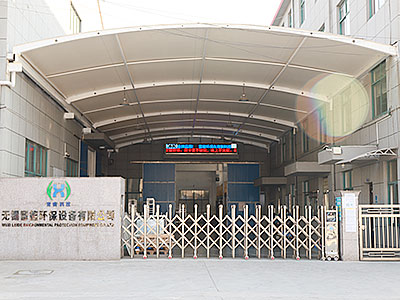EDI electrodeionization (hereinafter referred to as EDI) is a new water treatment technology combining two mature water purification technologies - electrodialysis and ion exchange. When water passes through the EDI membrane stack, the cation and anion in the water are first adsorbed and conducted by the ion exchange resin. At the same time, under the action of DC electric field, these cation and anion enter the concentrated water chamber through the cation and anion exchange membrane and are removed. In this process, the ion exchange resin is continuously regenerated by H + and oh - produced by hydrolysis. The salt dissolved in the water can be removed under the conditions of low energy consumption and no chemical regeneration. In this way, the product water with high resistivity can be produced continuously at a large flow rate.
Primary EDI: EDI that uses only primary pure water chamber to purify RO pure water is called primary EDI
Secondary EDI: the EDI that uses two-stage pure water chamber to purify RO pure water is called secondary EDI
The advanced nature of two level EDI Technology
3.3.2.1 advantages of primary EDI technology
Compared with the traditional technology of preparing ultrapure water by ion exchange, EDI technology has the following advantages:
① There is no need to use chemical regeneration agents, and there is no pollution in the production process, which belongs to cleaner production;
② Regeneration can continuously produce high-purity water with stable quality (5 ~ 10m Ω· cm) without shutdown;
③ Low power consumption and high water utilization rate;
④ Safe and reliable equipment operation and simple maintenance; Low operation cost; Small floor area, saving site construction costs.
3.3.2.2 advantages of secondary EDI technology
① The secondary EDI pure water chamber is connected in series, and the water production resistivity is very high and stable
② Secondary EDI concentrated water is connected in parallel and polar water is shared, which saves water resources and has high water utilization rate
③ The secondary EDI electrode plates are shared, and a set of voltage and current stabilizing DC power supply is used to save electric energy
④ The integration of secondary EDI reduces the equipment connecting pipeline, instrument and control system, and greatly reduces the equipment cost
⑤ Secondary EDI works at the same time, regenerates at the same time, and supplies water continuously all day
⑥ Secondary EDI does not require acid-base regeneration and acid-base wastewater discharge
⑦ Grade II EDI ultrapure water does not need polishing mixed bed or fine mixed bed, and there are no filter element consumables
The advanced nature of monitoring and control technology
Pressure, flow, liquid level, conductivity, resistance, pH and other transmitters are adopted, and a / D converter, PLC programmable controller and man-machine interface are adopted. Function: the man-machine interface displays data parameters such as flow, pressure, liquid level, conductivity and resistance. It can adjust and set two control points for each parameter. It can store 360 day working data for query at any time. It can dynamically display the system working process, working parameters of each point, over standard alarm, and the system is fully automatic control without personnel on duty.
To sum up, the purified water technology of the one or two stage RO+EDI+ polishing mixing bed is the pure water technology of the modern high-end laboratory ultra pure water machine. Its advanced nature is as follows:
1. High water production quality, continuous output, resistivity up to 18 m Ω Ultra pure water above cm.
2. It is not affected by the change of tap water and the decline of reverse osmosis removal rate, and the produced water quality is stable for a long time.
3. The pretreatment does not use conventional filter element consumables, produce consumable waste and pollute the environment.
4. The resin purification column is not used in the fine purification part, which does not produce consumable waste and pollute the environment.
5. Save water, electricity and resources, and truly achieve the goal of reducing consumption, emission reduction and resource conservation.
6. No acid-base regeneration is required, and zero sewage discharge is realized.
7. It is not only suitable for areas with low salt content of tap water, but also suitable for areas with high salt content of tap water.
















